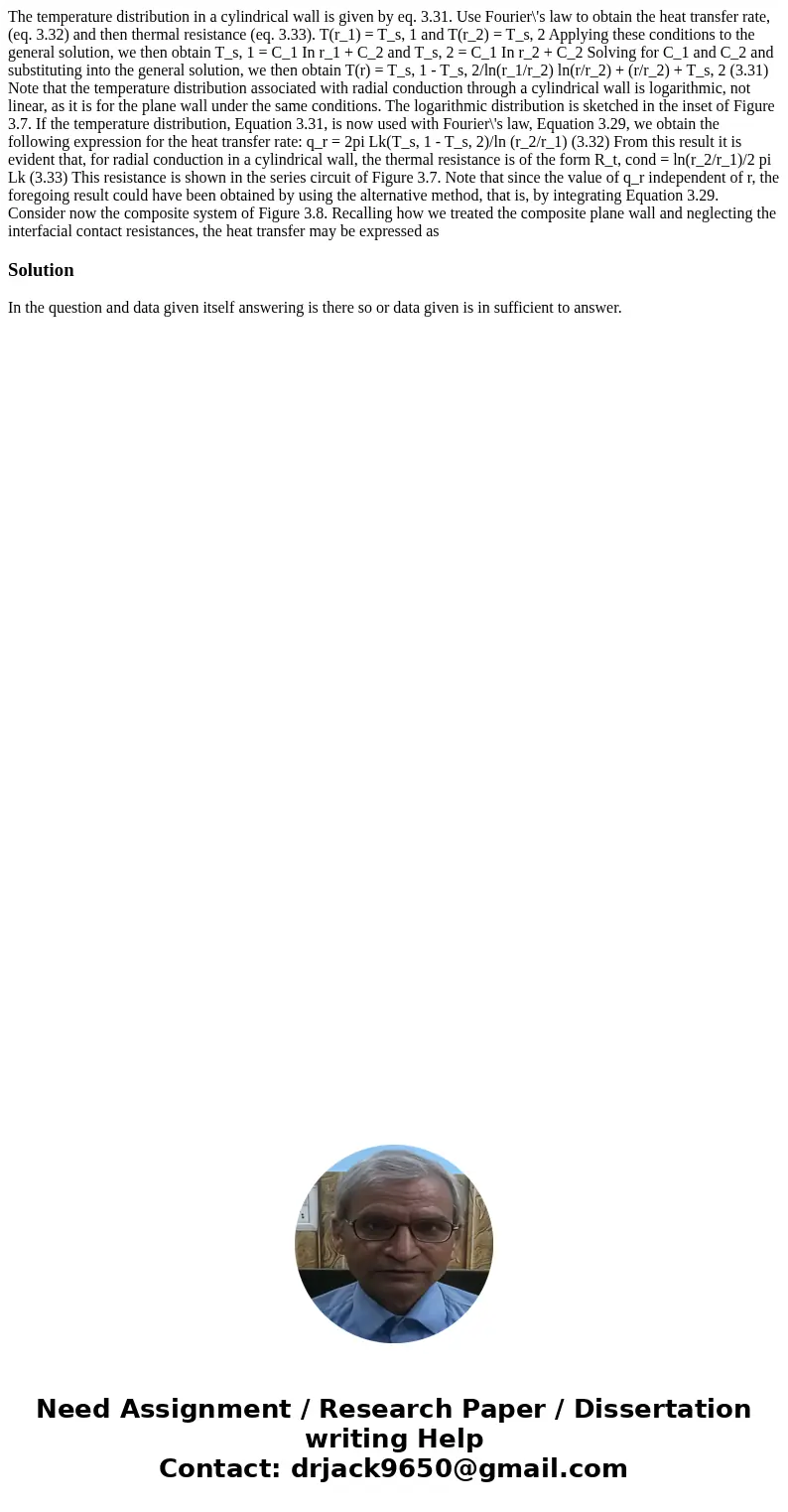The temperature distribution in a cylindrical wall is given
The temperature distribution in a cylindrical wall is given by eq. 3.31. Use Fourier\'s law to obtain the heat transfer rate, (eq. 3.32) and then thermal resistance (eq. 3.33). T(r_1) = T_s, 1 and T(r_2) = T_s, 2 Applying these conditions to the general solution, we then obtain T_s, 1 = C_1 In r_1 + C_2 and T_s, 2 = C_1 In r_2 + C_2 Solving for C_1 and C_2 and substituting into the general solution, we then obtain T(r) = T_s, 1 - T_s, 2/ln(r_1/r_2) ln(r/r_2) + (r/r_2) + T_s, 2 (3.31) Note that the temperature distribution associated with radial conduction through a cylindrical wall is logarithmic, not linear, as it is for the plane wall under the same conditions. The logarithmic distribution is sketched in the inset of Figure 3.7. If the temperature distribution, Equation 3.31, is now used with Fourier\'s law, Equation 3.29, we obtain the following expression for the heat transfer rate: q_r = 2pi Lk(T_s, 1 - T_s, 2)/ln (r_2/r_1) (3.32) From this result it is evident that, for radial conduction in a cylindrical wall, the thermal resistance is of the form R_t, cond = ln(r_2/r_1)/2 pi Lk (3.33) This resistance is shown in the series circuit of Figure 3.7. Note that since the value of q_r independent of r, the foregoing result could have been obtained by using the alternative method, that is, by integrating Equation 3.29. Consider now the composite system of Figure 3.8. Recalling how we treated the composite plane wall and neglecting the interfacial contact resistances, the heat transfer may be expressed as 
Solution
In the question and data given itself answering is there so or data given is in sufficient to answer.

 Homework Sourse
Homework Sourse